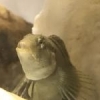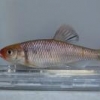Johnny darter breeding
#1

Posted 24 February 2017 - 01:50 PM
Now my question is what should I do now? Should I remove the other fish from the tank or should I leave it the way it is? I have quite a bit of cover in the way of rock piles caves sticks and plants, but I'd really like to see some of these fry raise up.
Also is it just me being a novice fish keeper or is it rare that this male went from wild adult fish to captive breeding fish in three days?
P.s. I'll post pictures later, also please help I only have a short time before these things start hatching!
#2

Posted 24 February 2017 - 05:49 PM
Sorry that I don't have any answers, but that's pretty cool that they spawned right away and that the male is eating!
Kevin Wilson
#3

Posted 24 February 2017 - 06:40 PM
#4

Posted 24 February 2017 - 07:45 PM
"No thanks, a third of a gopher would merely arouse my appetite..."
#5

Posted 25 February 2017 - 07:20 AM
I've had Seagreens that have spawned right away after being introduced to my tank, before even adapting to home foods. Probably just a time of year/situational thing. Unfortunately for me, I also had blackbandeds in the tank that were there to scoop up every egg that came out. Cool to watch though.
I think if you want to raise fry you would want to separate all the other fish. I have no experience with Johnny darters nor darter fry, but I would assume they would need something like baby brine shrimp or something similar in size and life to eat. You can always throw something like java moss or a similar moss in there near the cave and hope they take cover in that, which can also provide them with a source of food, but it's not guaranteed life with other predators in the tank.
Freshwater Aquarist
South Carolina Aquarium
Charleston, SC
#6

Posted 25 February 2017 - 08:38 AM
Having similar fish in the tank that are already eating non-live foods definitely helps a new-caught fish learn to eat non-live foods. Doesn't need to be the same species; just similar enough in size and behavior. There's no parental care after eggs hatch, so I'd move eggs to a separate tank, with a pump or airstone to keep flow around them. Check the NANFA main website for many articles on captive darter breeding, by Ray Katula and other folks.
Gerald Pottern
-----------------------
Hangin' on the Neuse
"Taxonomy is the diaper used to organize the mess of evolution into discrete packages" - M.Sandel
#7

Posted 25 February 2017 - 12:22 PM
0 user(s) are reading this topic
0 members, 0 guests, 0 anonymous users










